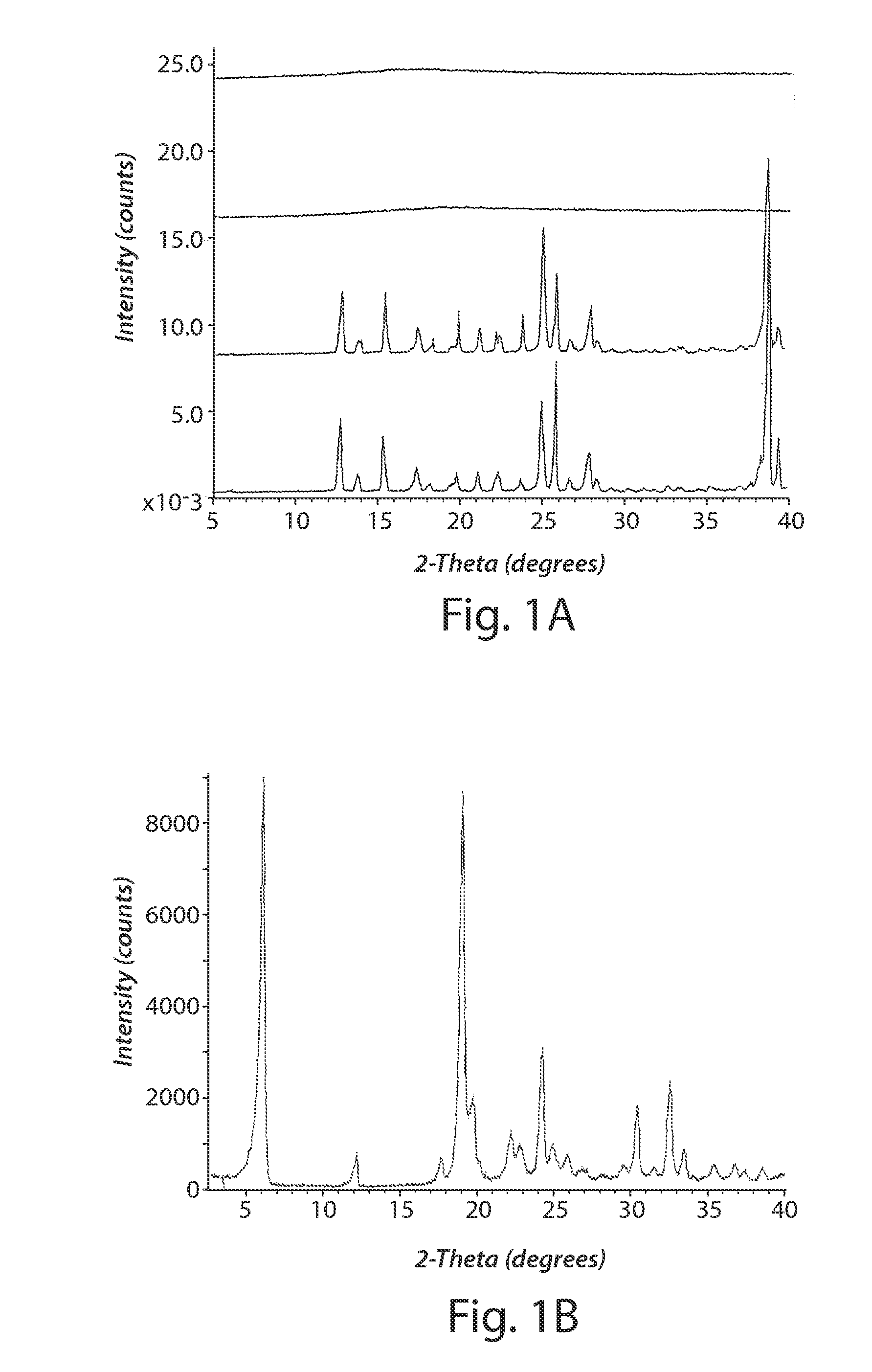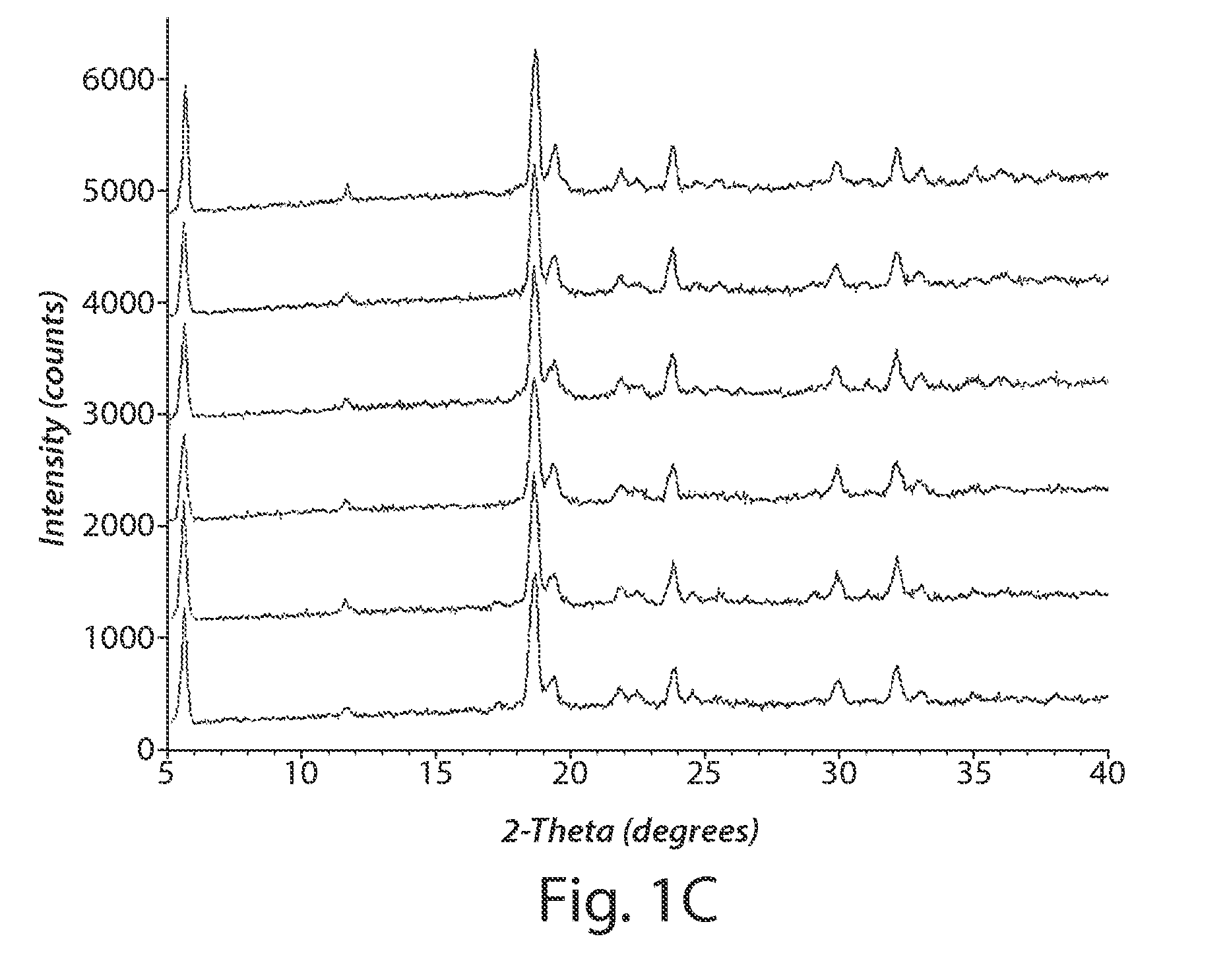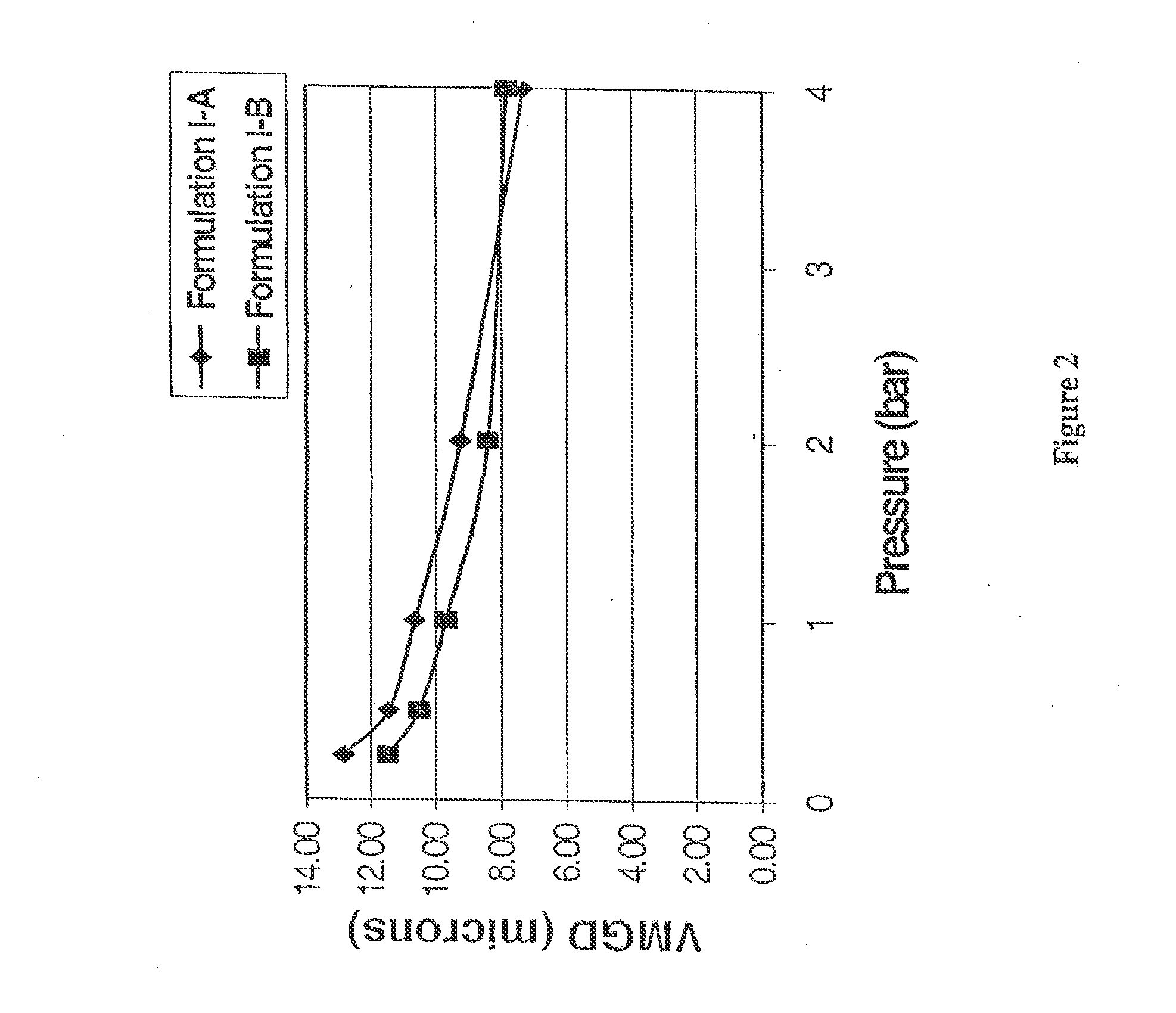Inhalable epinephrine
a technology of epinephrine and inhalable epinephrine, which is applied in the direction of aerosol delivery, peptide/protein ingredients, immunological disorders, etc., can solve the problems of compromising treatment, lack of predictability, and significant patient harm, and achieves limitations widely acknowledged by the medical community
- Summary
- Abstract
- Description
- Claims
- Application Information
AI Technical Summary
Benefits of technology
Problems solved by technology
Method used
Image
Examples
example 1
[0219]This example describes the preparation of particles having the composition of Formulation I, 60 weight percent DPPC, 20 weight percent sodium citrate, 10 weight percent calcium chloride, and 10 weight percent epinephrine freebase.
[0220]An aqueous phase was prepared by adding 0.23 g sodium citrate dihydrate, 0.13 g calcium chloride dihydrate, and 0.1 g of epinephrine freebase to 300 mL of water. An organic phase was prepared by adding 0.6 g DPPC to 700 mL of ethanol. The aqueous and organic phases were combined to produce a pre-spray drying solution of 1 liter total volume of 70 / 30 (v / v) ethanol solution / aqueous solution with a 1 g / L solute concentration. The batch mixed solution was then spray dried. The process gas, heated nitrogen, was introduced at a controlled rate of 38 mm of water (approximately equal to 98 kg / hr) into the top of a Niro Model PSD-1 spray dryer. The spray dryer inlet temperature was 115° C. and the outlet temperature was 45° C. The dew point was controlle...
example 2
[0221]This example describes the characterization of two separate batches of Formulation I dry powders, prepared as described in Example 1.
[0222]The physical properties of the particles obtained in two separate batches (Formulation I-A and I-B) are summarized in Table B. The fine particle fraction (FPF) as measured by a 2-stage Andersen Cascade Impactor, an in vitro aerodynamic sizing technique, was on average 56.3% for FPF less than 5.6 microns and 27.1% for FPF less than 3.4 microns. The aerodynamic size was also measured with an Aerosizer. The average value for the mass median aerodynamic diameter (MMAD) was 2.408 microns. The geometric size was determined by laser diffraction and the average value for the volume median geometric diameter (VMGD) at a pressure of 1 bar was 10.2 microns. In addition, the powder displayed relatively flowrate independent behavior as can be seen in FIG. 2 and from the ratio of VMGD measured at 0.5 bar to VMGD measured at 4.0 bar as shown in Table B.
TA...
example 3
[0231]This example describes the preparation of particles having the composition of Formulation VII, 69 weight percent DPPC, 20 weight percent sodium citrate, 10 weight percent calcium chloride, and 1 weight percent epinephrine freebase.
[0232]228 mg of sodium citrate and 132.5 mg of calcium chloride was added to 294 mL of water. A stock epinephrine solution was prepared by adding 68 microliters of 1N HCl to 6 mL of water, and then adding 10 mg of epinephrine free base. The stock epinephrine solution was then added to the sodium citrate and calcium chloride solution to form an aqueous solution. The pH of the aqueous solution was then adjusted to 5.0 with 1N HCl. An organic solution was prepared by adding 690 mg DPPC to 700 mL of ethanol.
[0233]The spray-drying feed solution was prepared by in-line static mixing of the aqueous solution with the organic solution at room temperature, and resulted in a 70 / 30 (v / v) organic solution / water solution with 1 g / L total solutes. The resulting com...
PUM
| Property | Measurement | Unit |
|---|---|---|
| weight percent | aaaaa | aaaaa |
| weight percent | aaaaa | aaaaa |
| weight percent | aaaaa | aaaaa |
Abstract
Description
Claims
Application Information
 Login to View More
Login to View More - R&D
- Intellectual Property
- Life Sciences
- Materials
- Tech Scout
- Unparalleled Data Quality
- Higher Quality Content
- 60% Fewer Hallucinations
Browse by: Latest US Patents, China's latest patents, Technical Efficacy Thesaurus, Application Domain, Technology Topic, Popular Technical Reports.
© 2025 PatSnap. All rights reserved.Legal|Privacy policy|Modern Slavery Act Transparency Statement|Sitemap|About US| Contact US: help@patsnap.com



